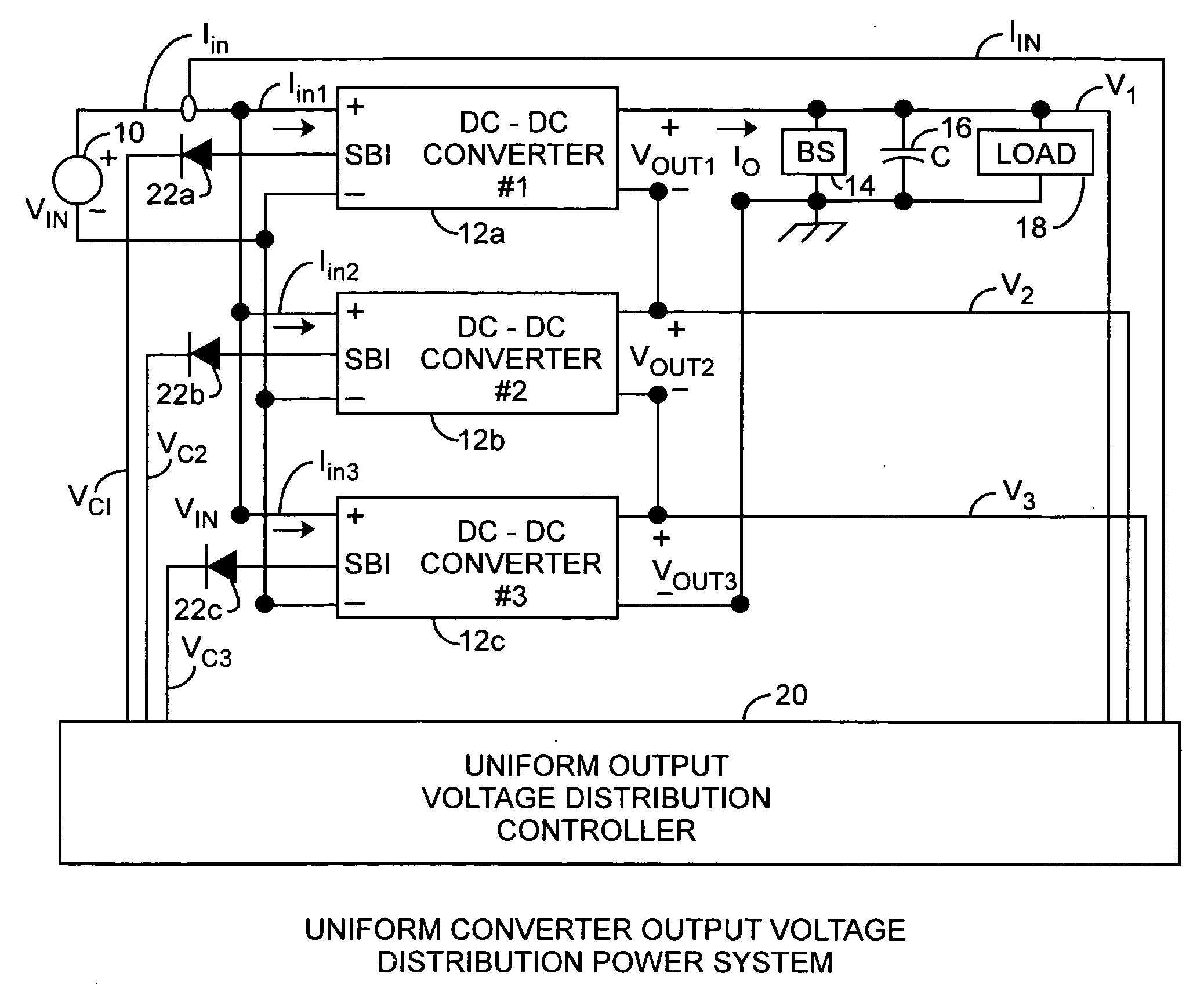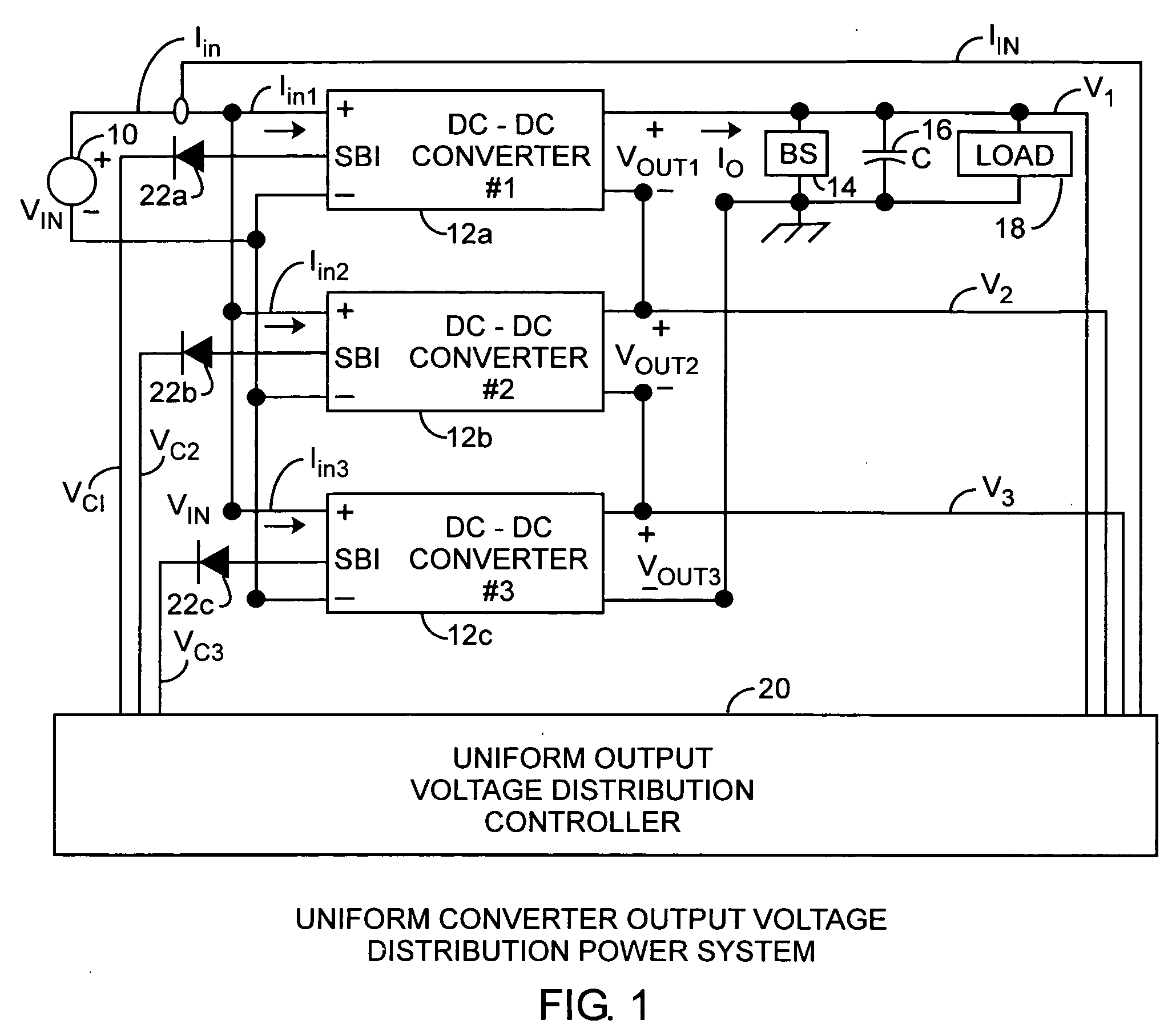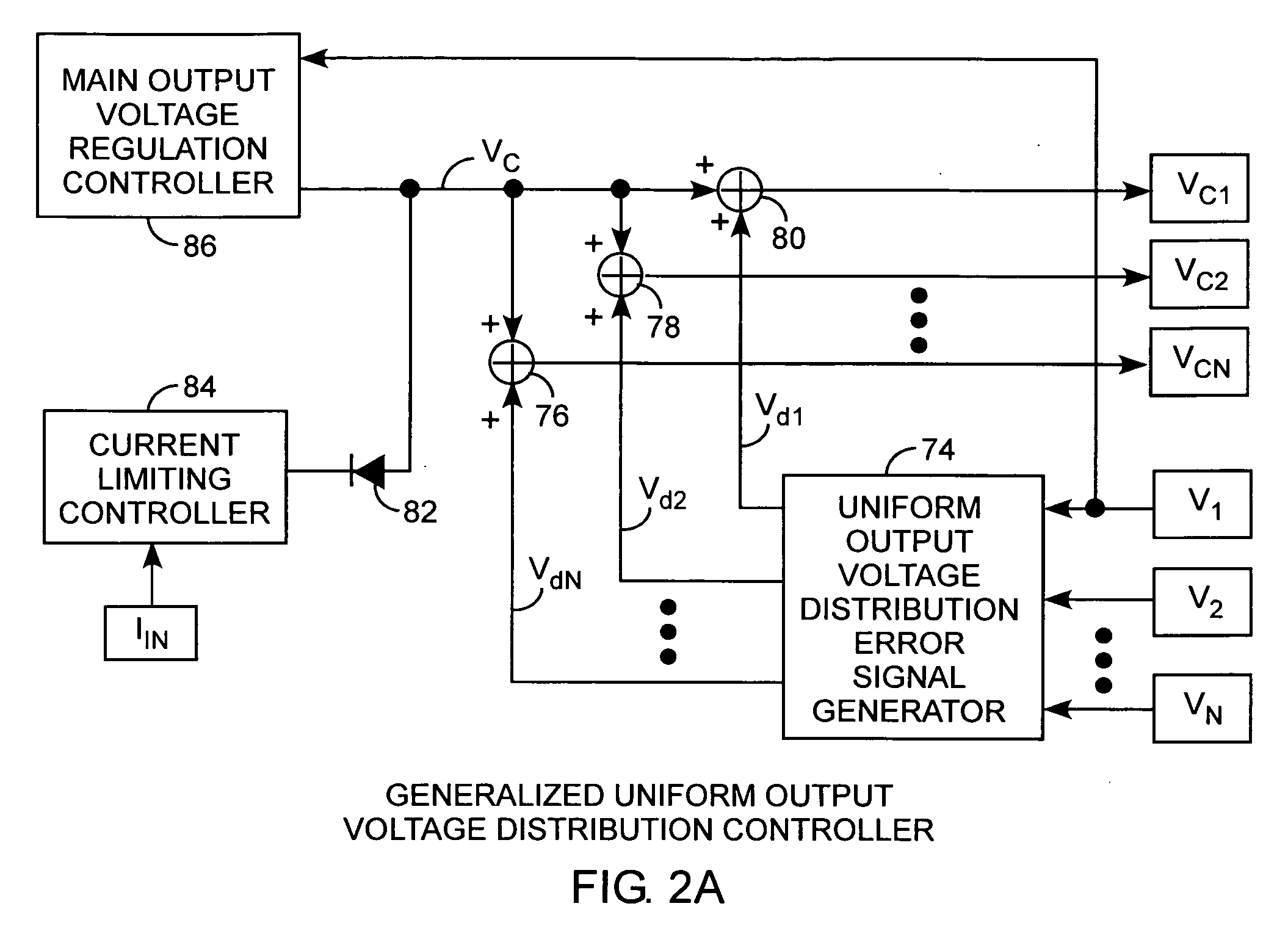Uniform converter output voltage distribution power system
a power system and output voltage technology, applied in the field of power systems, can solve problems such as uneven power distribution, unsatisfactory non-uniform output voltage distribution, and converters may be overstressed while the rest of the converters are under stress
- Summary
- Abstract
- Description
- Claims
- Application Information
AI Technical Summary
Benefits of technology
Problems solved by technology
Method used
Image
Examples
Embodiment Construction
[0020] An embodiment of the invention is described with reference to the figures using reference designations as shown in the figures. Referring to FIG. 1, a uniform converter output voltage distribution power system receives power from a DC voltage source 10 providing Iin input current that is sensed as IIN delivered to a plurality of DC-to-DC converters, such as three converters 12a, 12b, and 12c, that are connected in a parallel-input series-output configuration. The converters 12a, 12b, and 12c produce output voltages Vout1, Vout2, and Vout3, respectively that are series connected to a bias stabilizer 14, load capacitance 16 and a load 18. The output voltages Vout1, Vout2, and Vout3 are controlled to be equal for providing uniform voltage and hence uniform power to the load 18. The output voltages Vout1, Vout2, and Vout3 have positive terminals available for providing output voltage levels V1, V2, and V3 respectively that are fed to a uniform output voltage distribution controll...
PUM
 Login to View More
Login to View More Abstract
Description
Claims
Application Information
 Login to View More
Login to View More - R&D
- Intellectual Property
- Life Sciences
- Materials
- Tech Scout
- Unparalleled Data Quality
- Higher Quality Content
- 60% Fewer Hallucinations
Browse by: Latest US Patents, China's latest patents, Technical Efficacy Thesaurus, Application Domain, Technology Topic, Popular Technical Reports.
© 2025 PatSnap. All rights reserved.Legal|Privacy policy|Modern Slavery Act Transparency Statement|Sitemap|About US| Contact US: help@patsnap.com



